Australian Tropical Rainforest Plants - Online edition
Parsonsia straminea (R.Br.) F.Muell.


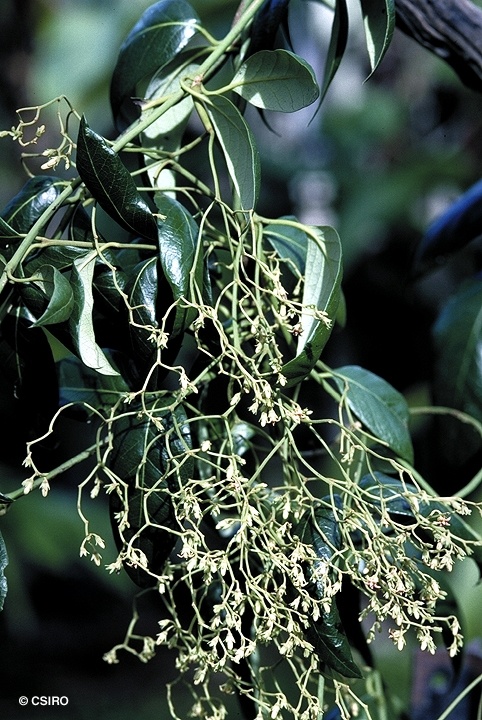
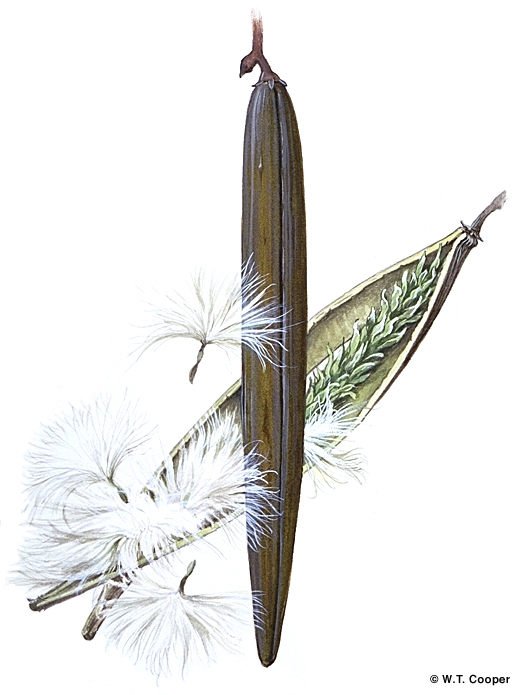
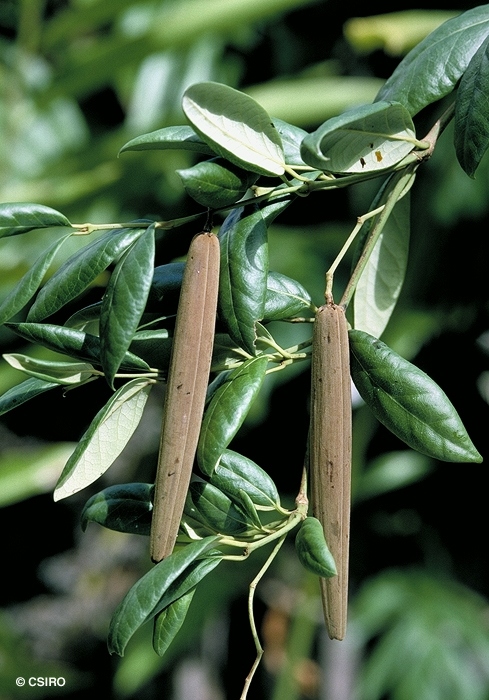
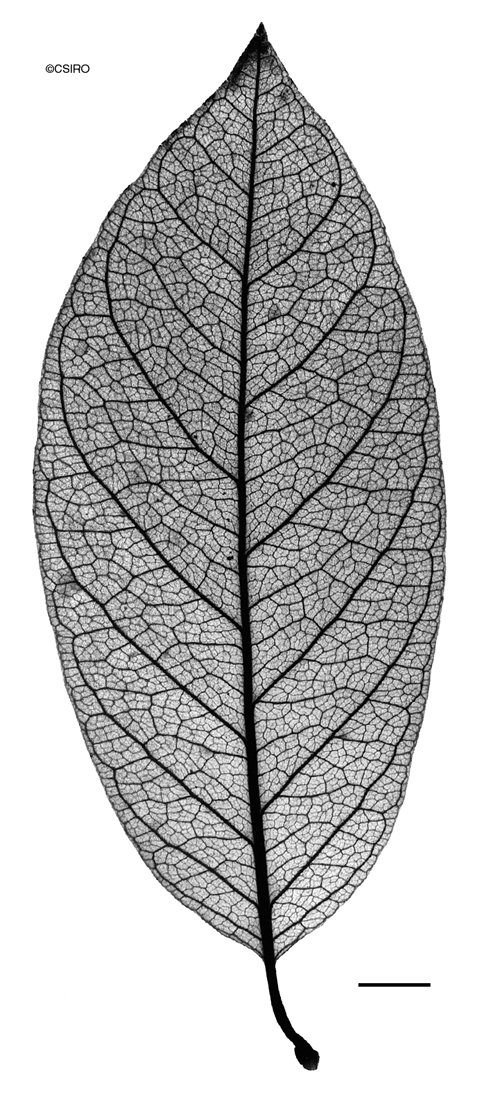

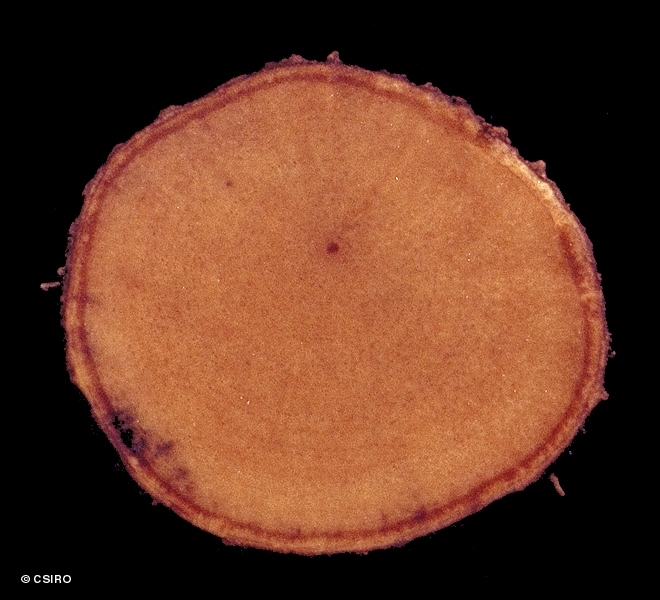
Mueller, F.J.H. von (1863) The Plants Indigenous to the Colony of Victoria 2: t. 58.
Silkpod, Milky; Silkpod, Green-leaved; Silkpod, Common; Common Silkpod; Monkey Rope
Leaf blades much paler on the underside, rather thick and leathery, about 9-16.5 x 3-8.5 cm, petioles about 1.5-2.5 cm long. Lateral veins forming loops inside the blade margin. Stems and petioles produce a honey-coloured exudate. Scars on the twigs look very much like stipular scars but stipules are not present even on young shoots. However, small peg-like glands may be visible on the twigs between the petiole bases.
Inflorescence about 22 cm long. Flowers about 8 mm diam. on pedicels about 4 mm long. Calyx lobes about 3 mm long. Corolla tube about 2 mm long, hairy around the throat, lobes about 4-4.5 mm long, hairy towards the base. Anthers about 3.5 mm long, fused together to form a cone around the style and stigma. Anther locules dehiscing only near the apex, each locule ending in a tail at the base. Staminal filaments about 2 mm long. Pollen white. Ovary surrounded by a 5-lobed disk. Ovary green, about 1 mm long. Style about 2 mm long. Stigma green and sticky.
Cotyledons ovate to elliptic, about 17-20 x 8-10 mm, underside purple in colour, petioles clothed in hairs. Both the upper and lower surfaces of the cotyledons clothed in papillose hairs but only along the midrib and lateral veins. First leaves shorter than the cotyledons. Leaf blades elliptic to elliptic-ovate, purplish below, both the upper and lowers surfaces clothed in short hairs. Seed germination time 31 days.
Occurs in CYP, NEQ, CEQ and southwards as far as south eastern New South Wales. Altitudinal range in CYP and NEQ from near sea level to 1200 m. Grows in a variety of types of rain forest on a variety of rocks. Also found on the margins of rain forest and eucalypt forest which is not burned very frequently.
Field evidence suggests that this species may be poisonous to stock but the evidence is not conclusive. Everist (1974).
Food plant for the larval stages of the Cairns Hamadryad and Common Crow Butterflies. Sankowsky & Neilsen (2000).
Food plant for the larval stages of the Australian Crow Butterfly. Common & Waterhouse (1981).





